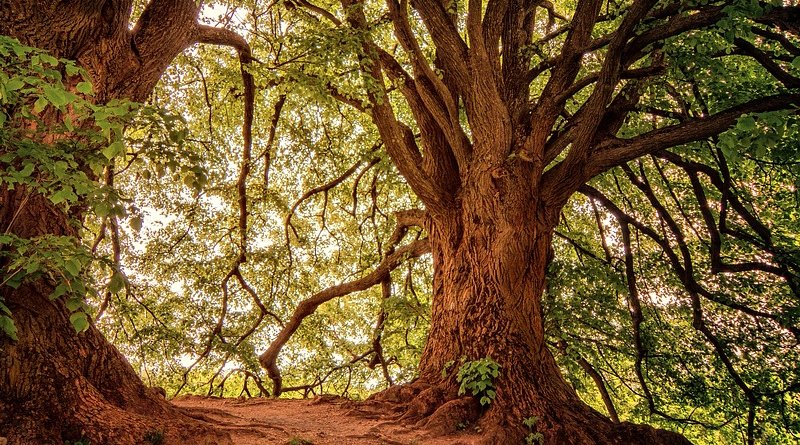Cool News In A Warming World: Why Invest In Future Forests – OpEd
By IDN
By Finn Grundmann *
Forests capture more than carbon! While plants are experts at retrieving carbon dioxide from the air, they have also perfected strategies to retain water in their natural surroundings. When thinking of the benefits of future forests, it is crucial to think beyond the tree level.
Tree roots loosen the soil, and by creating macropores, they drastically increase infiltration rates and help recharge groundwater levels. The effect of just one tree on those soil properties can be measured within a radius of 25 meters around the tree crown. Therefore, by planting just a hundred trees, an area as big as 32 full-size football fields can be restored.
In addition, reforestation reduces the risk of ecosystems drying out in a warming climate by keeping water in the soil. That is not all. Through their roots that hold onto fertile soil, they prevent erosion and reduce the risk of flooding. Especially in mountainous areas, these properties are essential to keeping farmland fertile. And because healthy soils lead to productive farms and thriving communities, trees planted with the High Atlas Foundation (HAF) provide a promising future for many farming communities in Morocco.
The much-needed positive effects of newly-planted forests go far beyond the local scale of villages, cities, and countries. Researchers have recently discovered that forests are the main link for oceanic precipitation to reach the drier continental regions. By releasing water vapour through tree leaves, forests create clouds and cool the climate dramatically.
Through this recycling of rainfall, water gets transported over long distances, and the release of microorganisms and organic compounds triggers rainfall along the way. Hence, investing in trees means the containment of carbon, retention of water, support to livelihoods, and, most importantly, the creation of a green link into our future.
Considering the many ecosystem services that are based in and maintained by diverse populations of trees, we and the quickly developing world should step away from seeing them merely as carbon sinks. When defining trees through just that one aspect we are likely to forget their keystone character in ecosystems: acting as communicators and keeping sustainable productive systems alive. A tree is where fungi, bacteria, insects, and many other organisms come together, making them diversity hotspots, holding entire ecosystems together.
Redefining trees as our entry point into complex systems that we can benefit from and thrive with means valuing their complexity and investing in custom-made blueprints for individual planting sites. Analysing local beneficial microbes, symbiotic fungi supporting future trees, or endemic plants fixing nitrogen for the plant stand are all measures that will demand more time and effort when starting a nursery, but in the long term they will reduce the amount of fertilizer and pesticides needed. By growing the trees within well-balanced, endemic ecosystems, nutrients like nitrogen and phosphorus will be recycled making fertilizers close to needless. In addition, common diseases, such as chlorosis or the fungal anthracnose, can be prevented by maintaining closed nutrient cycles and competition through beneficial fungi.
Sadly, we have long applied ready-made, mass-produced planting schemes, sterilizing soils to use standardized fertilizing mixtures and pesticide application schedules. We have turned ecosystems into blank canvases, allowing us to reproduce financially successful farming systems all around the world, including Morocco. But it is thanks to that same strategy of starting with a clean slate that ecological and cultural diversity is decreasing worldwide.
This development has created great dependencies on large agribusiness companies, while making agroecosystems highly vulnerable to drastic changes in climate. Diversity is the environment’s life insurance, and by destroying it, we erase the basis on which we live. Hence, sterilizing soils does not only reduce diversity, but it leaves plants exposed, having eradicated the numerous microorganisms that trees live in symbiosis with. And since less natural protection means more pesticides, I think we have created a rather vicious cycle.
While many of these developments sound depressing and frightening, I know that the vicious cycle we are currently in does offer a great opportunity. Because HAF is known for individualized solutions, found in cooperation with local communities, I believe that we are heading to become the first Moroccan Organization (if not the first in the world) to take that crucial philosophy further, making individualized, cooperative, and inclusive solutions a standard in ecosystem restoration. By planting trees in living soils with their unique microbial communities, we can lead by example, showing the world that successful community planning goes hand in hand with cultivating inclusive ecosystems.
It is time for us to demonstrate that planting trees is far more than retrieving carbon!
* Finn Grundmann is a student at Georg August University (Germany) in the program “Molecular Ecosystem Sciences”.

